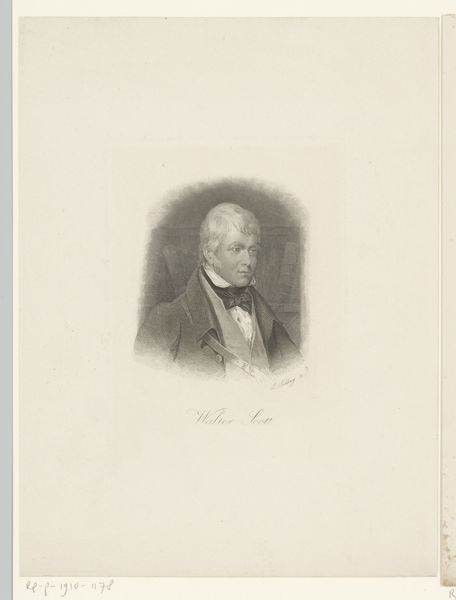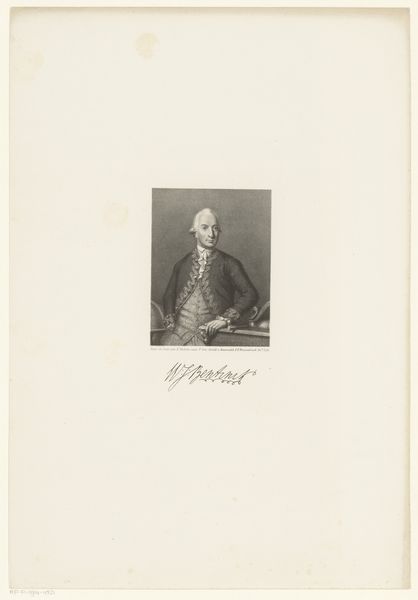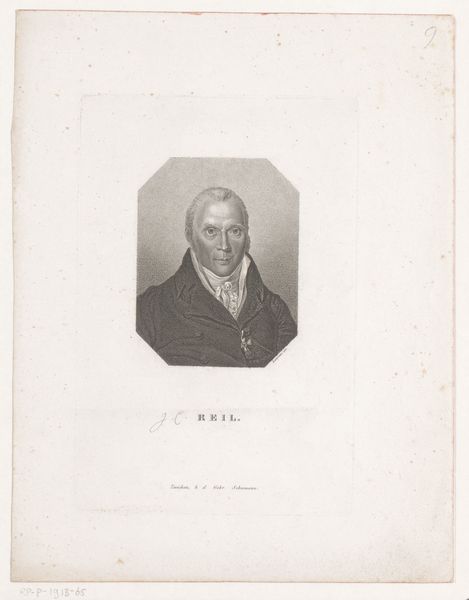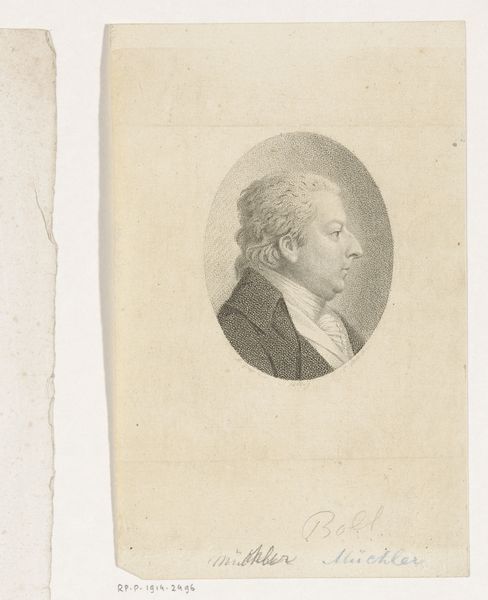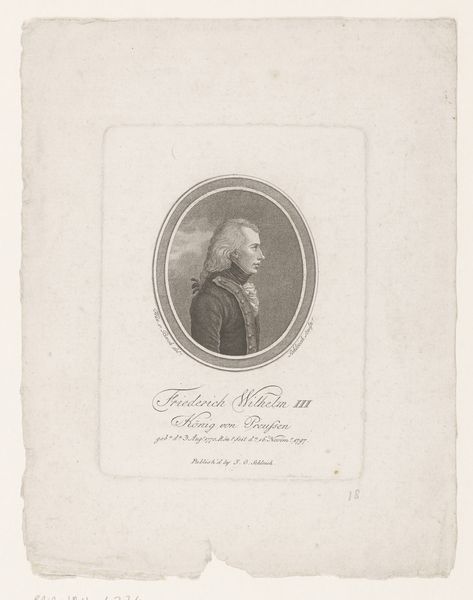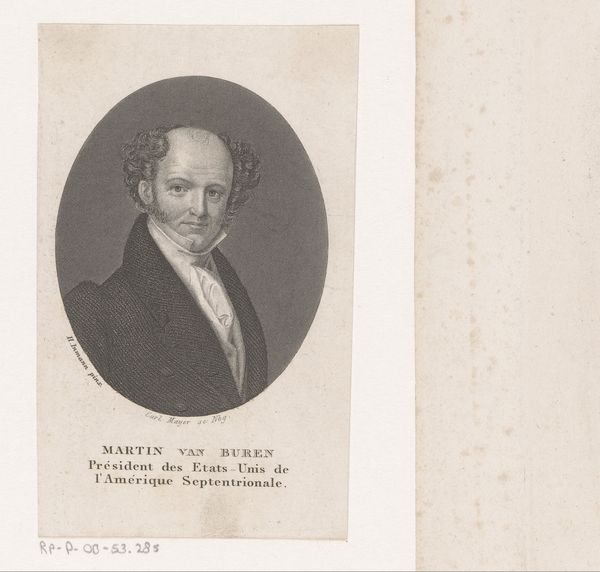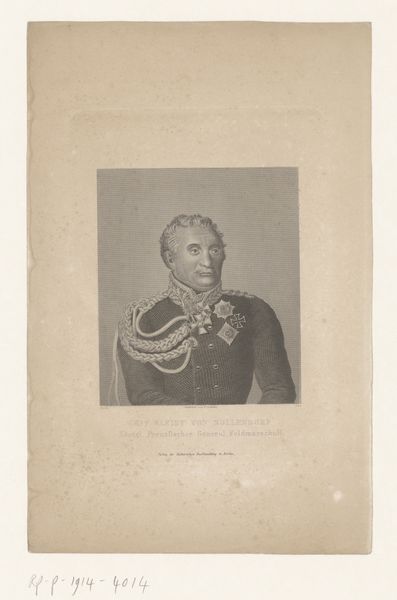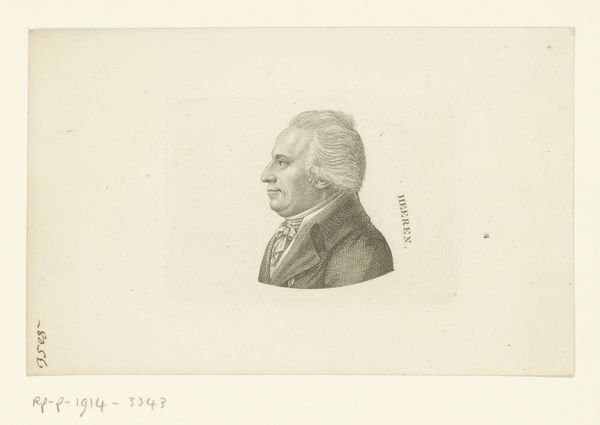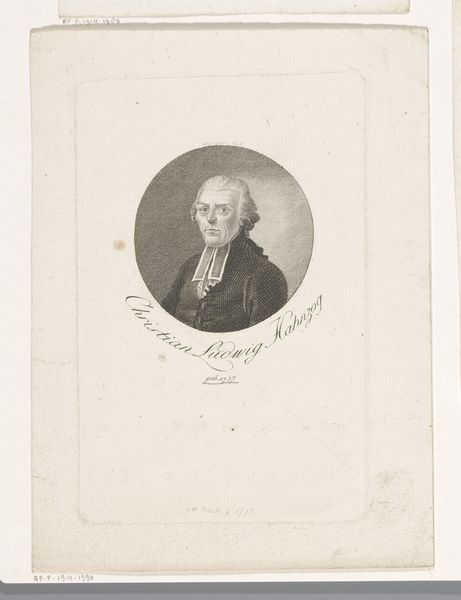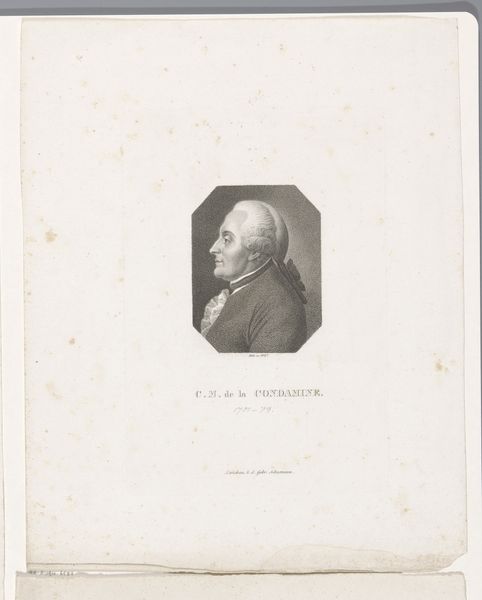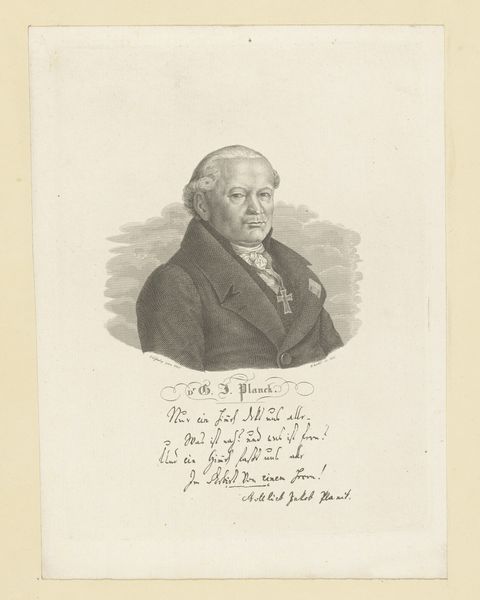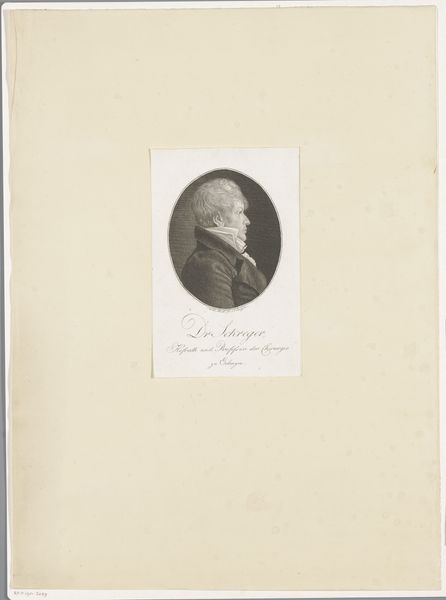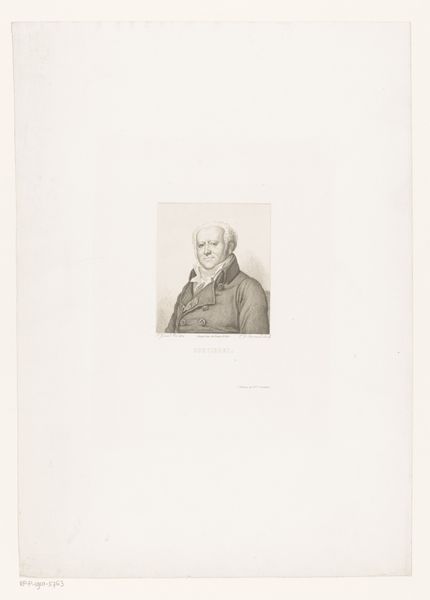
print, engraving
#
portrait
#
neoclacissism
# print
#
history-painting
#
engraving
Dimensions: height 98 mm, width 88 mm
Copyright: Rijks Museum: Open Domain
Curator: This portrait…it feels like looking into a faded memory, doesn’t it? The subtle grays of the engraving give it a ghostly, almost dreamlike quality. Editor: Absolutely, there's a certain detachment conveyed by the monochrome and the clean, neoclassical style. We’re looking at an engraving of Karl August von Hardenberg, dating somewhere between 1775 and 1840. He was quite a figure, a Prussian statesman. Curator: Ah, that explains the…sternness! I was going to say, there’s a weight in his gaze. He looks like someone who’s seen… things. Do you get that? Editor: Without a doubt. And this was intentional. Neo-classicism revived antique models which aimed at communicating ideals of virtue and stoicism. We’re meant to see in Hardenberg the virtues of leadership, perhaps a parallel to Roman emperors of the past. Curator: Roman emperors... I can see it. He definitely has that "I run the world" air about him, even in monochrome. It’s those tightly pursed lips, I think. What’s that medal he's wearing? Some sort of military honor? Editor: Probably, yes. Decorations and medals were powerful status symbols, indicating both military prowess and aristocratic rank. Their inclusion always served to remind viewers of the subject’s societal standing, his connections, his achievements... Curator: I do wonder what he was really like, though, behind all the pomp and circumstance. Was he a kind leader, or just a ruthless politician? These portraits can be so… carefully constructed, can’t they? I'm never quite sure what's genuine and what's just for show. Editor: That tension between reality and performance is crucial, isn’t it? By understanding the contexts within which an artwork has been produced, we can peel back the layers of constructed representation and reflect on their intentions, power structures and even manipulations. In many ways this portrait can serve as a tool for asking us to examine leadership and how those who represent us wish to be perceived. Curator: Absolutely. These glimpses into history give us something to ponder, connecting the threads of the past with the realities of today. Editor: Indeed, by grappling with our history, whether through its leaders or artworks like these, we challenge normative thinking.
Comments
No comments
Be the first to comment and join the conversation on the ultimate creative platform.
